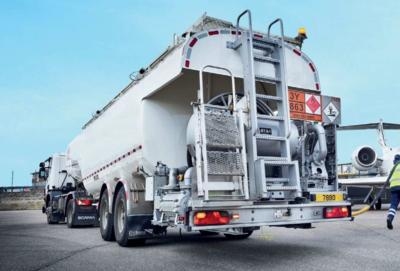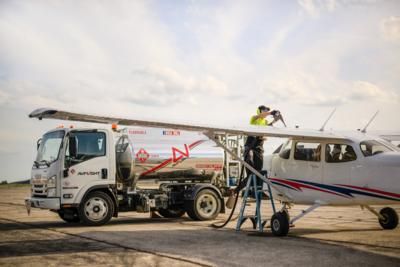Sat, Sep 17, 2022
Recent Developments in Lead-Free Fuel Brings Unique Considerations for Avgas Providers
The National Air Transportation Association has released a white paper regarding recent developments in unleaded avgas following the STC approval for General Aviation Modifications Inc’s. (GAMI) G100UL.

The Association's GA Fuel Subcommittee brought together a range of industry minds to create recommended best practices for the deployment of the unleaded fuel. The group threw its support behind the Eliminate Aviation Gasoline Lead Emissions (EAGLE) Initiative’s goal of an entirely lead-free general aviation ecosystem by 2031. Until now, the industry lacked a real, easily scaled, 100LL replacement that would require a minimum of infrastructure and provide maximum interoperability to ensure industry-wide takeup of the new tech. The FAA’s recent issuance of Supplemental Type Certificates approving the use of GAMI’s 100 octane unleaded avgas product, G100UL, in all spark-ignition piston aircraft and engines in the general aviation fleet turns that industry gap on its head. Now, a large plurality of aircraft can easily begin using unleaded avgas, with minimal fuss compared to some previous solutions that required specially formulated fuels with limited market penetration. NATA notes that
this major step forward will take some work, but affirms that the launch producer for G100UL, Avfuel, will soon be joined by a handful of other companies in expanding availability. Swift Fuels, Phillips66/Afton Chemical, and Lyondell Chemical/VP-Racing are all actively pursuing approval to produce and sell GAMI's new offering.

“With the spotlight glowing ever brighter on unleaded aviation fuels, industry stakeholders have been proactively seeking information on considerations for offering more environmentally friendly fuel options,” stated NATA Managing Director of Industry and Regulatory Affairs Megan Eisenstein. “NATA is pleased to offer guidance to assist them in taking a leadership role in advancing the national effort to reduce lead emissions from piston-engine aircraft through safe and effective unleaded avgas implementation.”
The white paper assists the unleaded push by suggesting 4 key phases for those fuel providers offering the 100LL replacement. Those phases - Discovery, Preliminary Communications, Infrastructure Considerations, and Final Communications - will help delineate efforts as stakeholders look to spread awareness and ease their area into safe and effective unleaded fuel use.
“It is critical to have a misfueling prevention program in place, and to implement comprehensive management of change processes and perform risk assessments when introducing new fuels,” said Steve Berry, NATA Managing Director of Safety and Training. “Keeping lines of communication open between pilots and FBOs throughout the fueling process is also essential.” NATA reminds the industry of its Safety 1st program, as well as its soon-to-be-updated programs to prevent misfueling.
More News
From 2017 (YouTube Edition): ADS-B For Airplanes And Drones… ADS-B technology developed by uAvionix has come full circle. The company began with a device developed for manne>[...]
Dead Reckoning Dead reckoning, as applied to flying, is the navigation of an airplane solely by means of computations based on airspeed, course, heading, wind direction, and speed,>[...]
"The next great technological revolution in aviation is here. The United States will lead the way, and doing so will cement America’s status as a global leader in transportat>[...]
Aero Linx: The Mooney Mite Site Dedicated to the Mooney M-18 Mite, "The Most Personal Airplane," and to supporting Mite owners everywhere. The Mooney M-18 Mite is a single-place, l>[...]
Also: Space Command Moves, Alpine Eagle, Duffy Names Amit Kshatriya, Sikorsky-CAL FIRE Collab Textron eAviation is putting the development of its Nexus electric vertical takeoff an>[...]
 Classic Aero-TV: UAvionix - Transitioning Between Manned & Unmanned Technologies
Classic Aero-TV: UAvionix - Transitioning Between Manned & Unmanned Technologies ANN's Daily Aero-Term (09.14.25): Dead Reckoning
ANN's Daily Aero-Term (09.14.25): Dead Reckoning Aero-News: Quote of the Day (09.14.25)
Aero-News: Quote of the Day (09.14.25) ANN's Daily Aero-Linx (09.14.25)
ANN's Daily Aero-Linx (09.14.25) Airborne-NextGen 09.09.25: Textron Nixes ePlane, Joby L/D Flt, Swift Approval
Airborne-NextGen 09.09.25: Textron Nixes ePlane, Joby L/D Flt, Swift Approval




